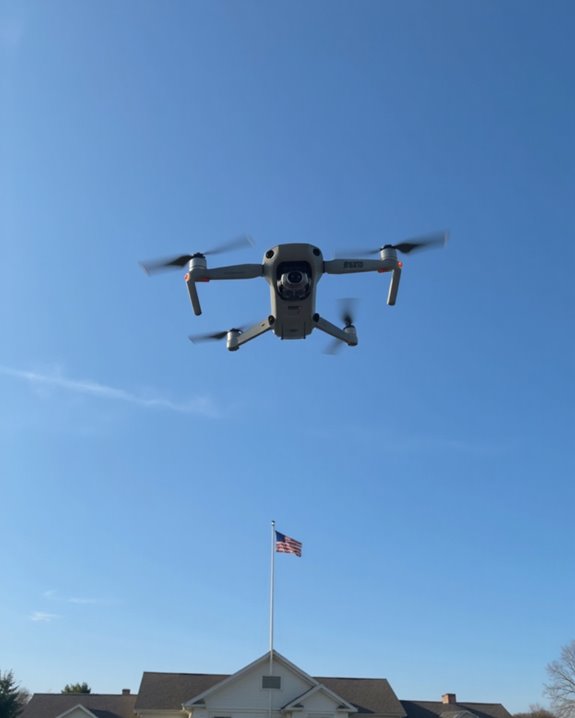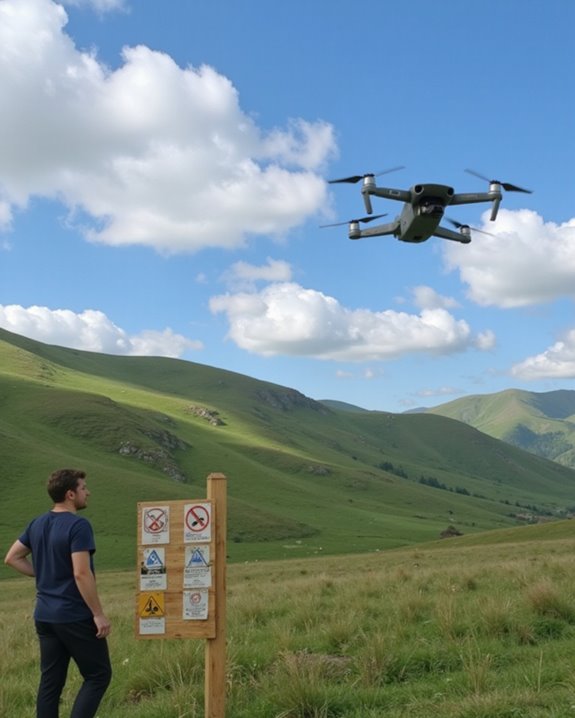DJI drones aren’t universally banned, despite widespread misconceptions! Currently, no global ban exists, though specific countries have implemented varying restrictions. The US is considering potential limitations through the NDAA by late 2025, while the EU, Canada, and Australia enforce registration and operational guidelines instead of outright prohibitions. DJI has actively requested security audits and pushed for evidence-based policies amid scrutiny. Understanding your local regulations is essential before launching your new drone into those beautiful skies!
Key Takeaways
- DJI drones are not banned globally, though they face potential restrictions in the US via FY 2025 NDAA by late 2025.
- The US government has imposed purchasing restrictions for federal agencies but hasn’t enacted a general consumer ban.
- In the EU, Canada, Australia, and UK, DJI drones remain legal but subject to each country’s registration and operational regulations.
- DJI has requested security audits and advocates for evidence-based decisions to address concerns about their products.
- Recent geofencing changes and firmware updates reflect DJI’s efforts to comply with evolving international regulations and security requirements.
The Current Legal Status of DJI Drones Worldwide
The world of drone regulations presents a complex, ever-shifting landscape for DJI drone owners and enthusiasts. Currently, DJI drones aren’t banned in the US, though they face increasing scrutiny with the FY 2025 National Defense Authorization Act potentially leading to restrictions by late 2025. What a difference a border makes!
The Regulatory History of DJI products reveals interesting Country Comparisons, with the EU requiring registration and safety compliance, while Canada enforces operational guidelines. Australia’s strict laws limit where you can fly, and the UK emphasizes privacy concerns. Meanwhile, India has just rolled out new regulations focusing on security.
Government agencies in some countries have already banned DJI for official use, though civilian operations generally continue. For drone pilots, staying updated on these evolving regulations is absolutely vital! Additionally, drone weight categories such as those under 249g for FAA exemption play a crucial role in legal requirements and operational freedoms worldwide.
Understanding China’s Export Control Regulations
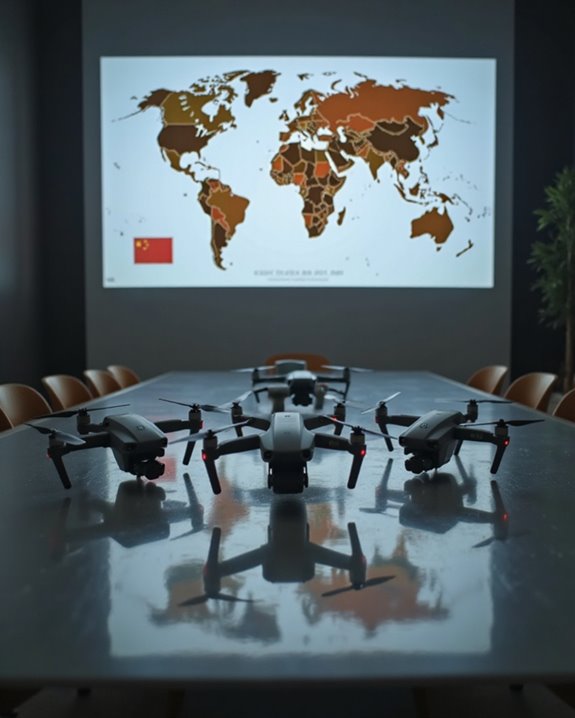
China’s export control regulations represent a sophisticated matrix of restrictions designed to safeguard national security while managing the global flow of drone technology. The Ministry of Commerce, working alongside other government departments, has crafted Export Policies that specifically target dual-use technologies like infrared imaging equipment, lasers, and hyperspectral cameras.
The Regulatory History shows consistent evolution, with significant adjustments made as recently as August 2024! These controls aren’t just about keeping military tech secure—they’re reshaping global supply chains right before our eyes. Companies worldwide, especially those dependent on Chinese components, are scrambling to adapt to these new realities. The restrictions particularly impact communication instruments and anti-drone systems, creating ripple effects throughout the industry. For drone enthusiasts, these regulations represent an important backdrop to understanding why certain technologies might face limitations! Additionally, the use of drone jammers is heavily restricted under these policies, reflecting concerns over signal interference and legal compliance.
DJI’s Response to International Scrutiny
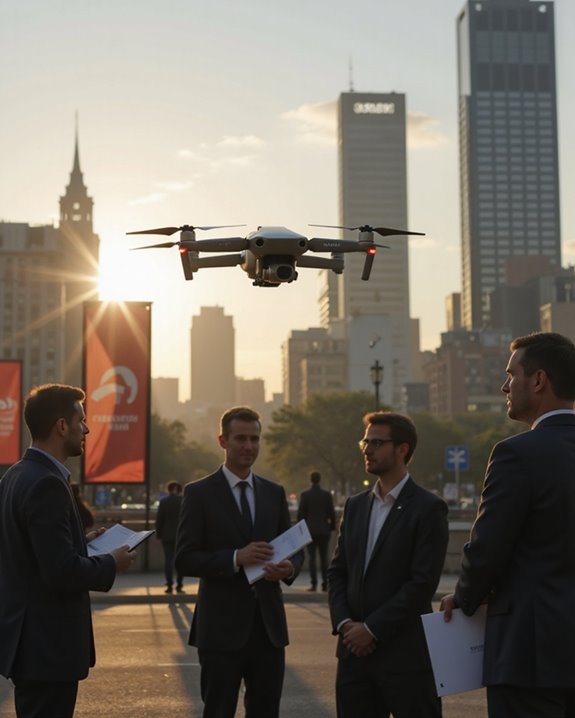
While China’s export regulations shape the global landscape, the company at the center of these discussions faces its own unique challenges. DJI has mounted a bold PR tactics campaign, openly requesting that U.S. security agencies conduct a thorough audit of its drones. “We have nothing to hide!” seems to be their rallying cry, as they confidently invite scrutiny.
The leadership response has been proactive rather than defensive. Instead of dodging concerns, DJI executives are actively engaging with the Department of Commerce during the public comment period. They’re pushing back against what they call “fear-based narratives” and advocating for evidence-based decisions. Smart move! By seeking transparency and demonstrating openness to oversight, DJI hopes to distinguish itself from the typical corporate dance around security concerns that so many Chinese tech companies perform.
Technical Specifications Affected by Restrictions
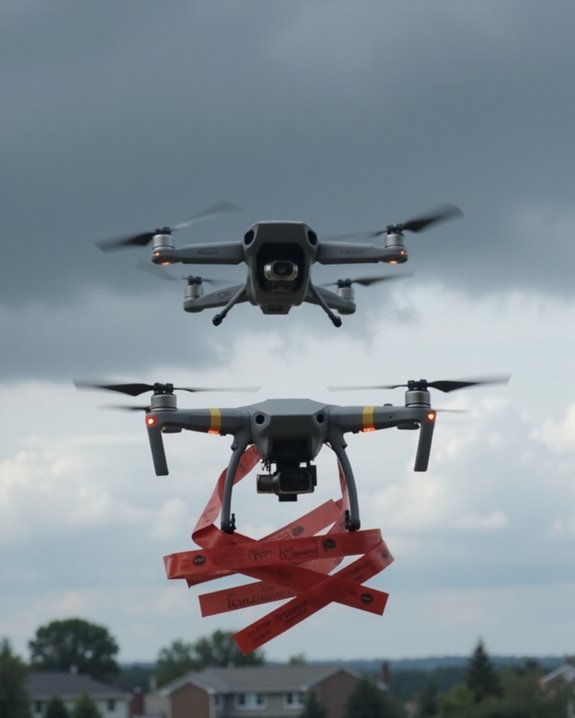
Significant shifts in DJI’s geofencing system have fundamentally altered how drone pilots interact with restricted airspace, though not the core technical capabilities of the devices themselves. While DJI removed automatic flight restrictions in formerly restricted zones, the drones’ internal hardware and performance specs remain unchanged.
The most substantial changes appear in firmware updates, which now replace hard restrictions with Enhanced Warning Zones that alert pilots to sensitive areas. These warnings rely on sensor enhancements that maintain internet connectivity to provide real-time airspace data. You’ll need to stay connected to receive these critical updates!
The responsibility falls squarely on you, the pilot. DJI’s technical systems now focus on providing the information you need to make smart decisions, rather than automatically preventing flights in controlled airspace. Fly smart, fly informed!
Additionally, for compliance with current regulations, many DJI models can be equipped with Remote ID modules that provide real-time GPS tracking and identification.
The Impact of Geopolitical Tensions on Drone Availability
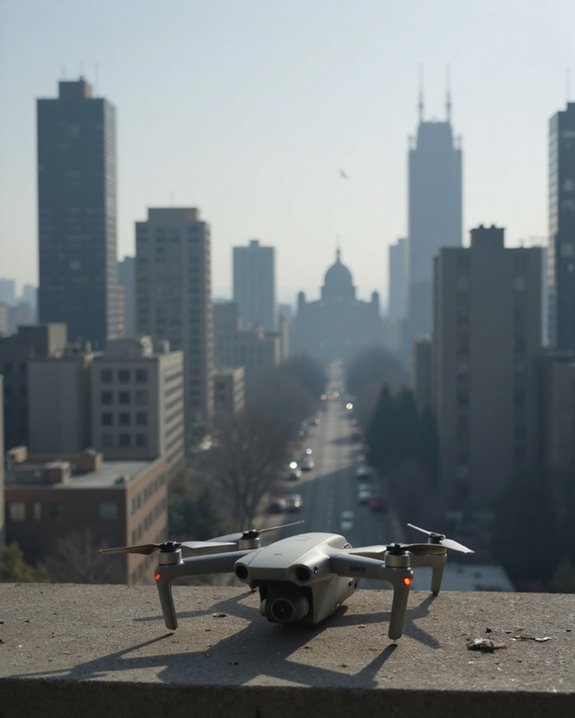
The United States government has recently intensified its scrutiny of DJI drones, creating unprecedented challenges for both the Chinese manufacturer and American drone enthusiasts. The geopolitical chess match between the U.S. and China has real Economic Effects on the drone market, with Customs and Border Protection now stopping DJI products at entry points! This uncertainty leaves consumers wondering if they’ll have access to these popular devices next month, next year, or ever again.
The Political Ramifications extend beyond simple trade disputes, as Section 1709 of the NDAA 2025 could automatically blacklist DJI drones by December 2025 if security reviews aren’t completed. Meanwhile, the Department of Commerce’s concerns about “foreign adversary influence” further complicate matters. For drone pilots, this diplomatic tug-of-war means potentially limited choices in an increasingly restricted marketplace.
Navigating Compliance Requirements for DJI Products
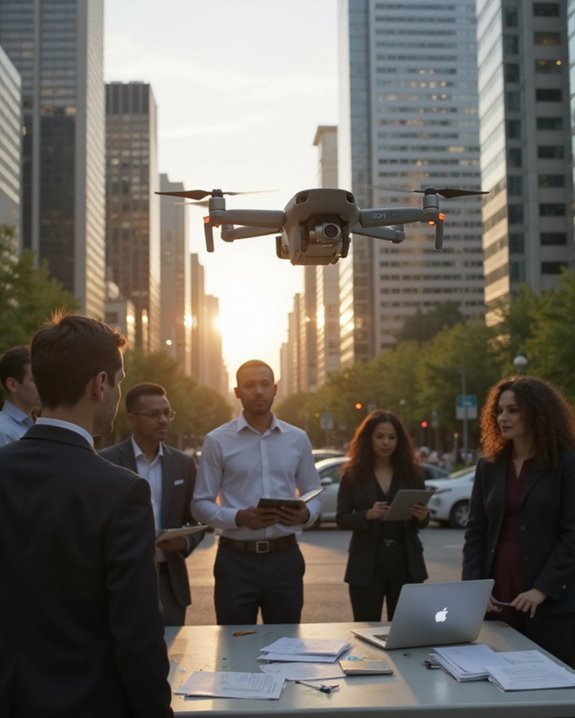
Keeping up with DJI drone compliance requirements has become a complex puzzle for drone enthusiasts and professionals alike! With deadlines shifting from September 2022 to December 2022 for new drones, and March 16, 2024, for existing owners, staying current is vital.
DJI has streamlined Update Procedures through firmware releases that enable Remote ID compliance, which transmits essential information like drone location and ID. Thankfully, most modern DJI models, including the Mavic 3 Enterprise series, have received FAA approval for these requirements.
Smart operators are seeking Compliance Training to understand both Remote ID and BVLOS regulations. Remember, while your Mini might seem harmless, it still requires registration and adherence to safety protocols! DJI’s compliance tools make handling these waters less intimidating—just be sure to keep those firmware updates current!
Separating Facts From Misconceptions About DJI Bans
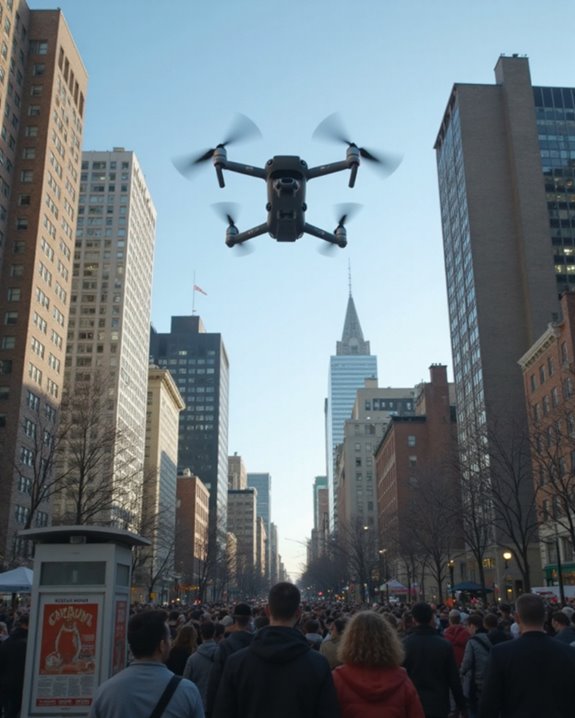
Widespread rumors about DJI drone bans often overshadow the actual facts! Many owners hear alarming claims about their favorite flying devices being universally prohibited, when the reality is much more nuanced.
The Myth Origins of these rumors typically stem from conflating increased regulations with outright bans. Proper Fact Checking reveals that while DJI drones face scrutiny in some regions due to security concerns about Chinese technology, they aren’t banned worldwide! Instead, they’re subject to varying country-specific regulations that differ greatly across borders.
In the United States, for example, you’ll need to register drones over 0.55 pounds, while EU countries have their own registration requirements for camera-equipped models. Don’t let misinformation ground your drone adventures! Understanding the distinction between reasonable regulation and actual bans helps enthusiasts confidently navigate the complex but manageable world of drone ownership.
Frequently Asked Questions
How Do DJI Drone Bans Affect Professional Filmmaking and Photography?
Professional filmmakers and photographers face potential workflow disruptions, requiring creative adaptations to alternative equipment if restrictions are enacted. The situation raises ethical implications regarding equipment investment and industry standards during this regulatory uncertainty.
Can I Modify My DJI Drone While Complying With Regulations?
Nearly 40% of commercial drone operators modify their equipment. Users can implement legal modifications like payload adjustments and safety upgrades while ensuring compliance with FAA regulations by maintaining remote ID functionality and warning systems.
Will Older DJI Drone Models Face Retroactive Restrictions?
Vintage models of DJI drones are unlikely to face immediate retroactive restrictions. Current legislation proposals and regulatory frameworks suggest older units will remain operational, though future compliance may depend on retroactive updates to software systems.
How Do Insurance Policies Cover Restricted DJI Drones?
Insurance policies for restricted DJI drones often contain specific policy exclusions related to regulatory compliance. Operating banned models may result in claim denials if usage violates local laws or specified terms of coverage.
What Alternatives Exist if DJI Drones Become Unavailable in My Region?
Several alternative brands exist including Autel, Parrot, Skydio, SenseFly, and Yuneec. Users should research each option’s features and check with regional suppliers for local availability, service support, and compliance with regulations.

